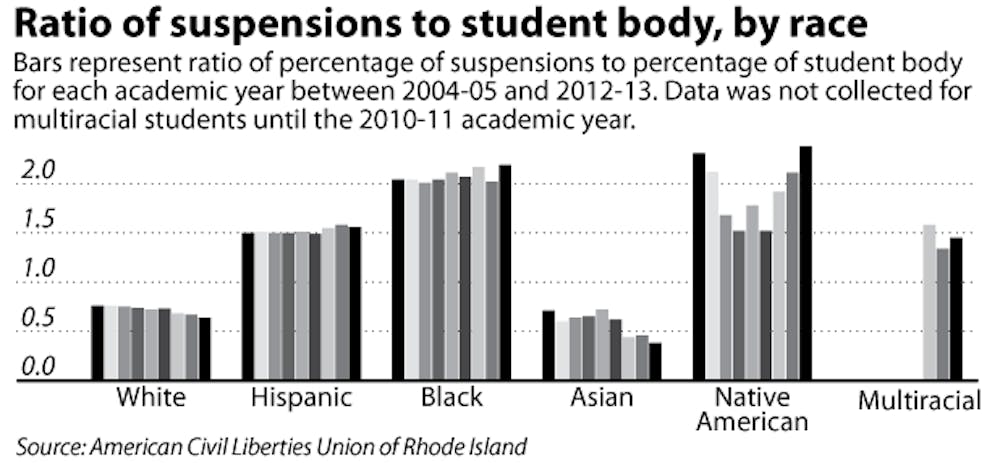Black and Hispanic students made up only about 30 percent of students in Rhode Island school districts during the 2012-13 school year but received over 50 percent of the state’s out-of-school suspensions, according to a report by the American Civil Liberties Union of Rhode Island released March 10.
The report criticizes the overuse of suspensions, as well as their disproportionate effect on minority students.
The overuse and inequitable use of suspensions are tied together, said Stephanie Geller, a policy analyst from the advocacy organization Rhode Island Kids Count. The discrepancy in rates of suspension between white and minority students is misleading because, unlike their white peers, minority students are more likely to be suspended for more subjective issues, such as “excessive noise” and “disorderly conduct,” she said.
Other schooling conditions, such as students’ inability to meet grade-level requirements, insufficient support for students and the criteria for disciplinary action, affect suspension rates, said Professor of Education Kenneth Wong.
Over-aged and under-credited students who accumulate uncompleted courses often exhibit frustration, which tempts teachers to suspend them, he said. “A lot of these older students may also have other emotional-behavioral challenges both inside and outside of school,” Wong added.
There is concern about suspending students who are already not achieving in school, Geller said, adding that there has been a recent push in urban schools for more restorative justice practices, such as talking through conflicts.
About 75 percent of Providence students come from low-income families, Wong said. The district needs a more coherent policy and better utilization of resources to target system-wide challenges, such as low reading levels and lack of communication between teachers, he said.
Suspensions affect students regardless of their race, said Hillary Davis, policy associate at the RIACLU. Students who are suspended once are more likely to be held back and eventually drop out. They also have lower life expectancies and financial achievement and are more likely to have future encounters with the criminal justice system in a “school-to-prison pipeline,” she said.
“The reliance on suspensions has made the other options appear less viable,” Davis said.
In its report, the RIACLU recommends that school districts end the practice of doling out out-of-school suspensions for low-risk behaviors, assess racial disparities in disciplinary methods and generate a plan for how to diminish these disparities, she said.
“We can come up with a lot of excuses,” Davis said. “But this has a serious disproportionate effect on minority students.”
A 2012 law sponsored by Rep. Grace Diaz, D-Providence, prohibited schools from suspending students for attendance infractions and was partially responsible for a recent fall in the state’s suspension rates, according to the report.
“I think we need to revisit how we define the criteria to suspend children,” Wong said, recommending that Rhode Island look at how states with lower rates define suspendable acts.
Minority and immigrant parents are not always welcome in Rhode Island’s urban schools, Wong said. School policy needs to better accommodate families that are not used to interacting with teachers or a school system, including through family engagement strategies that focus on high-need and underrepresented families, he added.
“We need to continue to be creative in how we address problems in education while stamping out racial bias,” Diaz said, according to a March 14 General Assembly press release. “Many of these behavior issues are also cries for help, and with the right support, I’m sure we can find a better way to discipline and teach these students.”

ADVERTISEMENT




